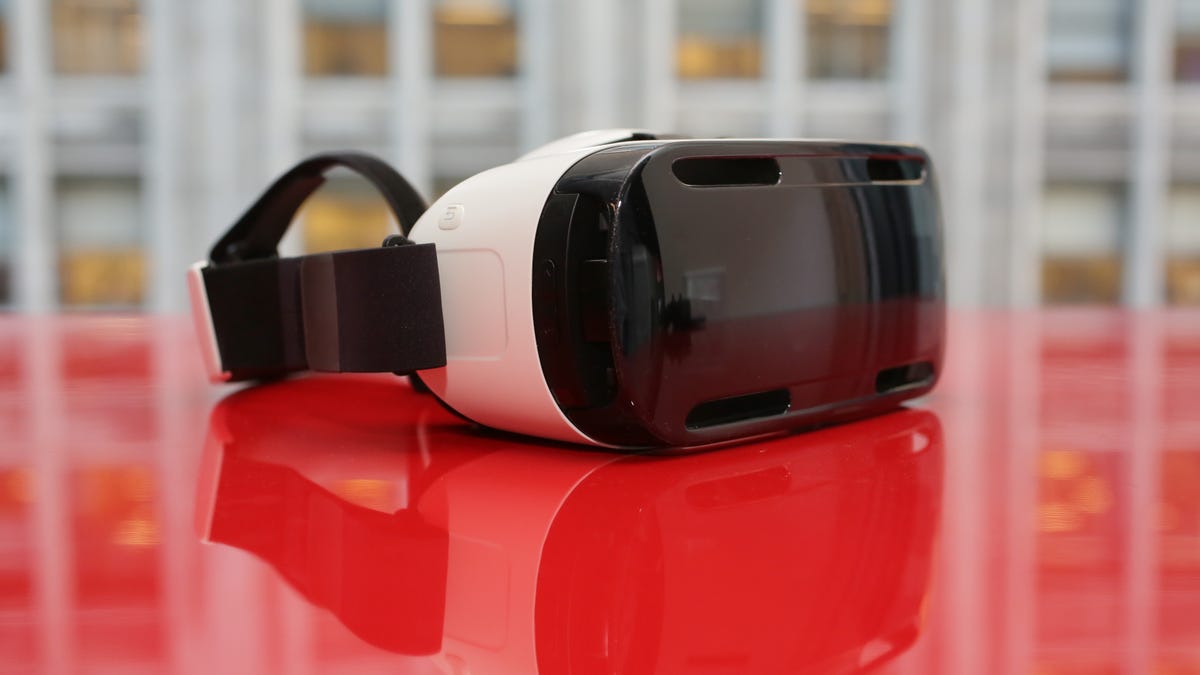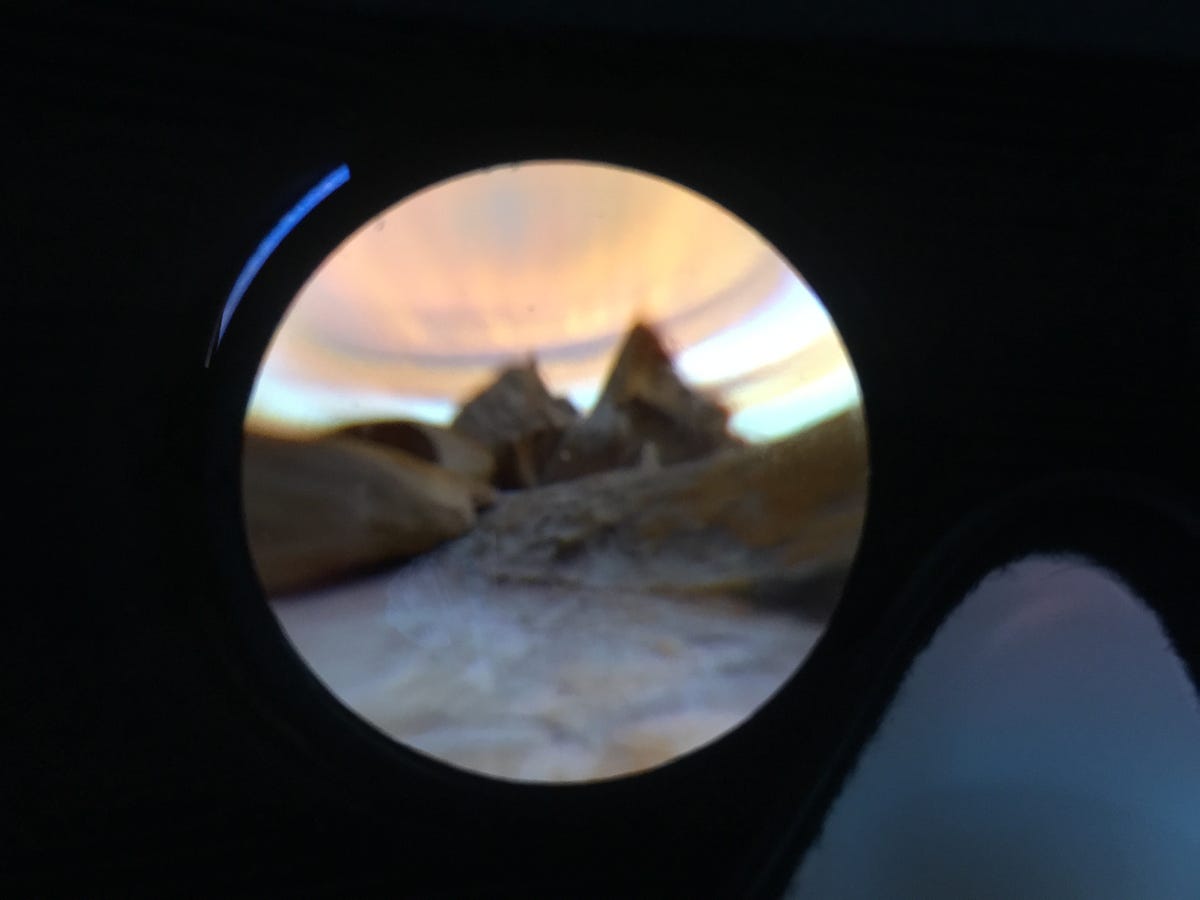
Sarah Tew/CNET
Virtual reality is finally here, but it’s still not ready for the mass market.
VR has been lurking for years: for decades it was a pop-culture theme and shopping mall novelty. The more recent wave of products — Oculus Rift and Project Morpheus — remain just outside of consumers’ hands, announced but not yet available.
The arrival of Samsung Gear VR and (to a lesser extent) Google Cardboard are changing the equation — to a point. Both are goggle add-ons that turn existing phones into virtual-reality headsets. But while you can buy them now, they have limitations. Cardboard is basically more of a geeky DIY proof of concept. Gear VR, meanwhile, is only available in the US, and its apps are limited. Indeed, Samsung’s naming it the “Innovator Edition” is basically code for “early-adopter edition.” These are early days for virtual worlds.
VR is an impressive experience, and often awe-inspiring. It also needs work. VR as we know it now is a work in progress. 2015 could bring huge next steps, however. Despite its incredible promise, virtual reality’s limitations are still very clear…and here’s what it needs next.


Scott Stein/CNET
Improved pixel density
Putting on a modern VR headset for the first time, you’re likely to be blown away by the expansive worlds that can extend above, to the sides, and even behind. But you’ll probably also wonder, “why does everything look a little fuzzy or pixelated?” That’s because the pixel-dense displays being used to drive VR headsets are splitting the screen for two eyes, and then magnifying everything using huge lenses. Even a ridiculously pixel-packed 2,560×1,440 5.7-inch Samsung Galaxy Note 4 display ends up being functional but not spectacular. (Ironically, with the screen just millimeters from your eyes, this is finally somewhere that 4K resolution would actually be useful.) Getting to the “retina display” of VR could take a while, because pixel densities just aren’t there yet…and the processors needed to drive those displays will need to be even better.

Better input and ways to interact
VR is a technology for your eyes and head, but after looking around at all the pretty sights, how do you do things? Gear VR uses a limiting side touchpad or, for some games, a Bluetooth game controller, plus internal gyros and an accelerometer for head-turning. What we really want to do is move around and grab things. Project Tango from Google and other depth-sensing 3D cameras are exploring full motion and physical movement, and Project Morpheus and Oculus Rift have advanced head-tracking assisted by an external camera, while Morpheus also uses PlayStation Move motion controllers to surprisingly good effect. There are gloves and peripherals that are exploring haptic vibration feedback, and companies like LeapMotion and the Oculus-acquired Nimble VR whose technology can scan and track hand movement. Being able to reach out and do things in virtual worlds will be a major next step.

More killer apps
It sounds obvious, but the more great content, the better. VR needs its own specially tuned games and apps, which means that we’re starting from square one. Phones, tablets and PCs all share some common ability to look at things like photos or videos, or browse Web pages. On VR, all the rules need to be rewritten to accommodate the different optics. There are some fascinating first efforts being written for VR platforms, but there’s a ton of work to do. Oculus has been building up a pretty great library of software from a worldwide base of enthusiasts, but VR is still amazing mainly because of its technology, not its software. Expect that to change fast.

Better compatibility with glasses, and different prescriptions
Samsung Gear VR just barely works with my seriously bad -9 vision: I can take my glasses off and turn the focus dial all the way to the end. VR headsets use focus dials like binoculars to bring the lenses closer or farther away to the screen, but they usually can’t be individually adjusted. And while some VR headsets can be worn with glasses on, others can’t. There are a lot of people with a lot of different eye conditions, and it’s not as easy to accommodate them all.

Compatible ecosystems
Samsung Gear VR runs on Android and uses an Oculus app-hub to load its particular set of compatible apps. The PC-based version of Oculus Rift has its own software. It’s unclear how Project Morpheus will work, but it’s safe to assume it’ll be limited to its own PlayStation games and apps. Ideally, you’d want one VR movie to be available across multiple platforms, when possible. For games it wouldn’t necessarily make sense at all, but what about 360-degree panoramic photos and videos? These are the sort of next-generation entertainment that VR purveyors are hoping will hook us in, and to make that work it’ll be important for all types of VR to be able to access the limited range of exciting content as much as possible.

Ways to work on more devices
Google Cardboard cleverly demonstrated that VR could work on many phones, but the reality is that some displays and hardware are better than others at reducing lag and powering graphics and video. Having a variety of ways to plug in more phones and connect to more computers is the only way to reach enough people to make VR take off. The good news is that phone tech, in particular, should be at the point where many 2015 phones will be large-screened and very capable.



